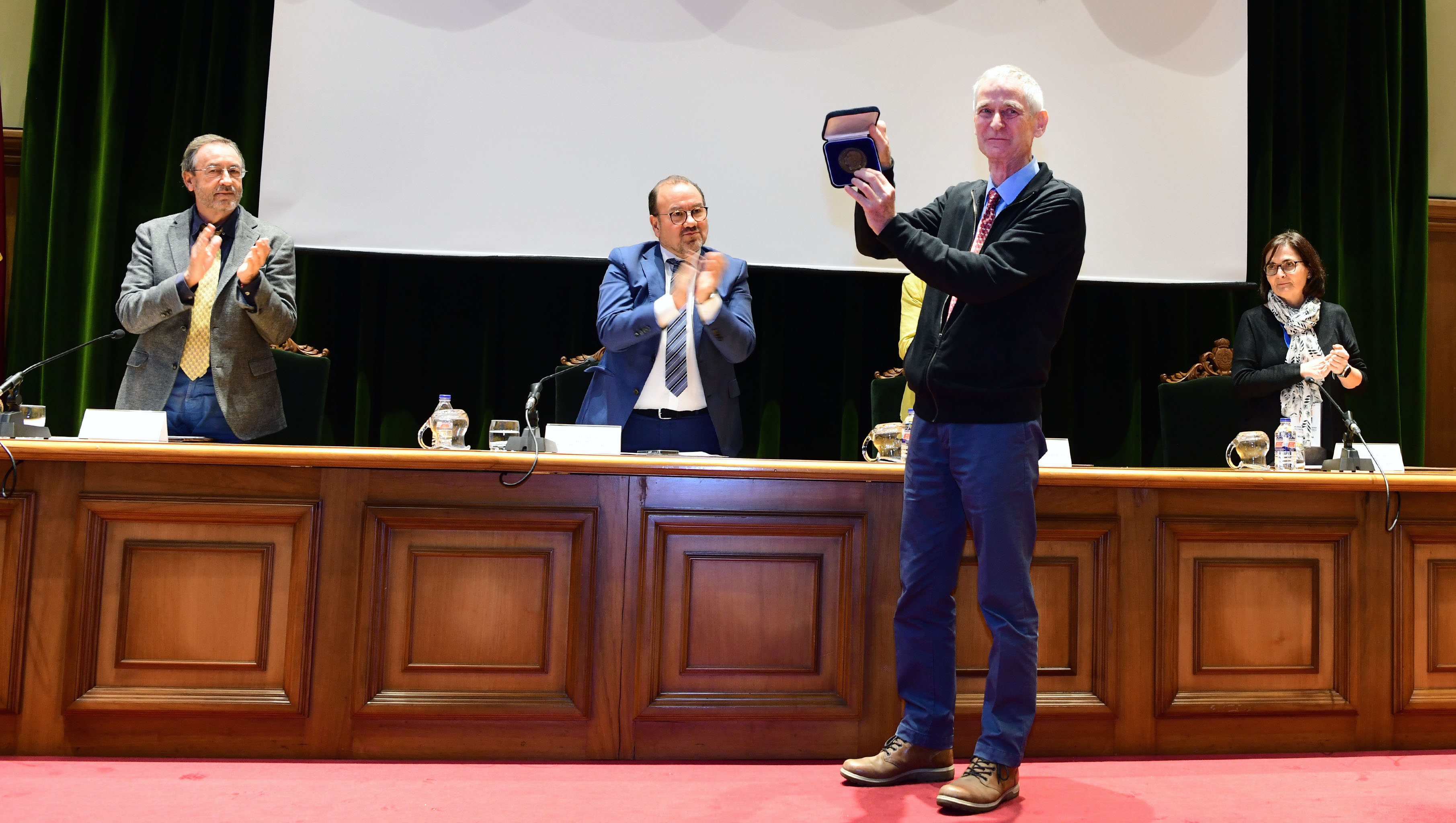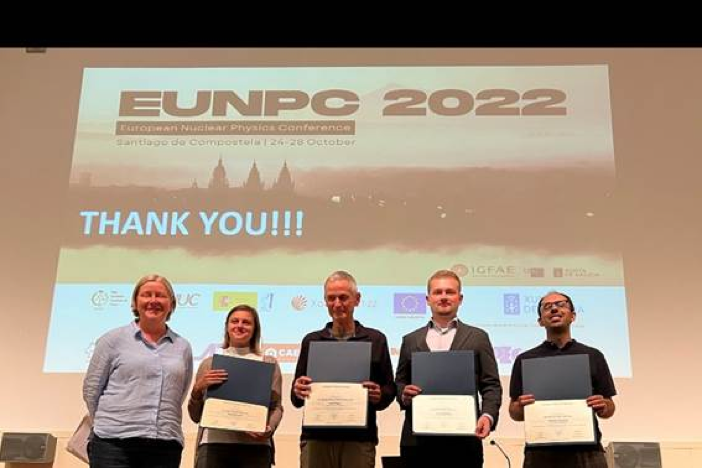The 2022 edition of the European Nuclear Physics Conference (EuNPC), organized by the Nuclear Physics Board of the European Physical Society, took place, from 24th to the 28th of October 2022, in the beautiful Spanish city of Santiago de Compostela. It was the 5th edition of the EuNPC series, after the ones in Bochum, Bucharest, Groningen, and Bologna, and it gathered more than 200 participants from all over Europe, and beyond.
During five intense days, plenary and parallel talks provided the latest news on the themes dealt by the Nuclear Physics Division of EPS, such as nuclear structure and dynamics, heavy Ion collisions, theory and phenomenology, accelerators and applications.
Besides the scientific talks, four special sessions were held, two of which were devoted to award ceremonies and two to the EPS “Young Minds” project. The Lise Meitner Prize, which is given every two years for outstanding work in the fields of experimental, theoretical or applied nuclear science, was awarded to Prof. Phil Walker (University of Surrey). Prof. Walker earned the prestigious prize for his seminal contributions to the understanding of long-lived nuclear excited “isomeric” states and the factors that determine their half-lives, that range from nanoseconds to years. The PhD Prize, recognizing the excellence of a recent PhD thesis in experimental, theoretical or applied nuclear physics, was awarded to three young promising scientists: Giuliano Giacalone, for his thesis “Observing the shape of nuclei at high-energy colliders”; Jonas Karthein (“High-precision measurements in the direct vicinity of the doubly magic 100Sn (N=Z=50) at ISOLDE/CERN”); Ágota Koszorús (“Laser spectroscopy at the frontiers of RIB production”). The sessions devoted to the Young Minds (YM) project, which aims at boosting the career and the scientific creativity of young physicists around Europe and fostering the creation of an international network of young and motivated researchers, consisted in a roundtable on “Life beyond the PhD, a guide to a satisfactory professional career” and a workshop on “Well-being and Positive Mental Health in research career”. Both these sessions saw an important participation of young scientists, interacting actively with the panelists.
More information on EuNPC2022 can be found on the conference web site: https://indico.cern.ch/event/1104299/

Prof. Phil Walker receives the Lise Meitner Prize

From left to right: Prof. Miguel A. Sanchis Lozano (Vice chair of the RSEF), Prof. Alison Bruce (Chair of the EPS-NPD board), Prof. Antonio López Díaz (Chancellor of USC), Prof. Phil Walker, and Prof. Dolores Cortina, head of the EuNPC22 Local Organizing Committee.

From left to right: Prof. Alison Bruce (Chair of the EPS-NPD board), Dr. Ágota Koszorús, Prof. Phil Walker, Dr. Jonas Karthein, Dr. Giuliano Giacalone.